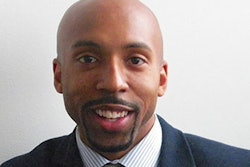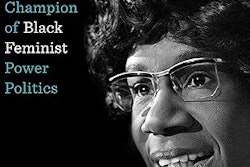Women have been making crucial contributions to the fields of science, technology, engineering, and mathematics since long before STEM was an educational buzzword. Women wrote the first computer algorithm and the first programming language to use English words. They were the first to propose that stars are made of hydrogen and helium and the first to reveal dark matter. Women have invented everything from the first home security systems to the first windshield wipers.
The benefits of female participation in STEM disciplines are common-sensical. Research has shown that underrepresented minorities, including women, are more likely to introduce innovative concepts — albeit fewer accepted concepts compared to those of white men. Nonetheless, the percentage of women STEM faculty remains disproportionately small.
This lack of representation has long been blamed as a pipeline problem — that there are fewer women receiving STEM PhDs and therefore fewer candidates to teach. But as time has passed, that excuse has rung less true. Over the past 10 to 15 years, women have been closing the gap at an increasing speed. Women now receive around 40% of STEM PhDs — far from parity but a definite improvement. Yet, only 28% of STEM full and associate professors are women.
The reasons for this are complex and interrelated. Several facts stand out. Most importantly, women in STEM often earn less than their male counterparts. Although women publish less than men, they do more of the sort of necessary work that isn’t respected by promotion boards, like mentoring and service activities. Additionally, the tenure process can be inflexible, ignoring women’s’ often heftier care-giving obligations. Even accounting for differences in education, career attainment, family responsibilities, or work effort, men in STEM are given more chances to advance and to receive awards. When they are part of a team, women are less likely to be credited as authors, regardless of their actual contributions, and their work is less likely to be cited. And on top of everything else, women in STEM face feelings of isolation and hostility, replete with microaggressions and the invalidation of their ideas.
Beyond unfair conditions for women in STEM, the consequences for society are serious. The sexism that fuels the disparities has a pernicious way of feeding on itself. A study published in Personnel Psychology found that in fields with few women, researchers were more likely to agree with the statement “men are often more suited than women to do high-level work in [my discipline].” There may be a loss in critical innovations that women could be making in the present, which damages prospects for developing more female STEM students in the future — as the saying goes, “you can’t be what you can’t see.”
Responding to a problem
To help address these issues, the National Science Foundation has created the ADVANCE Adaptation track grants, which offer schools millions of dollars to implement tested programs to increase the representation of women in academic science and engineering careers. Since 2001, the foundation has given over $270 million in advance grants to institutions and nonprofit groups in 41 states, the District of Columbia, and Puerto Rico.
 Dr. Roberta Rincon
Dr. Roberta Rincon
One of the awardees is Old Dominion University, which will receive $1 million over the next three years. According to Dr. Austin Agho, provost, vice president for academic affairs, and principal investigator of the grant, only in the past few years have women been promoted from assistant professors to full professors in STEM departments. One of Old Dominion’s main efforts for change will come in the form of “launch committees” as adapted from a previous ADVANCE project at the University of Michigan - Ann Arbor.
Launch committees are groups of experienced faculty and administrators that will create programming for new faculty members to plan out their career trajectories, build rapports, and develop mentor relationships. Launch committee programming will teach new faculty members about how to acquire internal and external research funding and offer suggestions about integrating with the broader university community.
York lauds the program as “really smart.” He describes it as a way to help women on faculty get the sort of information that’s often shared in informal social connections between men.
Dr. Roberta Rincon, associate director of research for the Society of Women Engineers, agrees.
“There are a lot of hidden rules, things that people who want to advance or receive tenure, they know. People learn that through who they know, who they interact with,” she says. “Connecting women with individuals who can help guide them is really, really valuable.”
 Dr. Lara Perez-Felkner
Dr. Lara Perez-Felkner
Bradley University, which received just under $1 million over three years, is taking a different approach. They’ll be focusing their efforts on the men in STEM departments with the “Advocates and Allies” program. The initiative builds on previous ADVANCE research at North Dakota State University showing that men are better able to tackle issues of bias when they discuss them in single-gender groups. Over a year, the men in the program will discuss readings, case studies, and their own experiences as they learn to identify bias and how to respond effectively, according to Dr. Jackie Hogan, professor of sociology and anthropology, as well as the grant’s principal investigator.
Bradley will also implement “informed chair training” to help department heads recognize when their actions — even subtle ones — might have disproportionate effects on women. Hogan noted that, for example, chairs ask for volunteers to do service work that is often less respected. When the time comes for promotion and tenure decisions, women are much more likely to volunteer because they are socialized to be team players. Bradley suggested that department heads could instead assign the work on a rotating basis.
Department leaders are also the focus at Old Dominion, which will fund “equity advisors,” or senior faculty members reporting directly to the dean, who are responsible for conducting surveys on departmental climates and working with chairs on strategies to improve them.
“That’s quite important and helpful because there’s a lot of denial or maybe just unawareness that issues exist,” says Rincon. “Bringing that to light is critical.”
To make the situation on campus clearer, Bradley will be introducing an equity dashboard full of statistics that previously were found in a dozen different places, according to Hogan. These will include faculty demographics, promotion and tenure success rates, and median salary rates by field. There also will be data on internal grant funding, start-up packages, and data from campus climate surveys. Dr. Jackie Hogan
Dr. Jackie Hogan
Rincon described the project as potentially difficult but worthwhile.
“It gets very uncomfortable because a lot of times, when you’re starting out, you don’t look great. You have to overcome that fear,” she says. “[But] if you really care, then being transparent about where your organization stands is critical to moving the needle.”
Bradley is also looking at other tough changes, including reforms to its tenure promotion, and retention policies, which haven’t been updated in 30 years.
Hogan says a focus would be evaluating the relative weight that is given to research, teaching, and service and bringing the guidelines into closer alignment with professors’ actual workloads. She adds that the changes will benefit all faculty.
Although Hogan says she believes Bradley is taking important steps, she says the steps still fall short of the ultimate goal of sustained pay equity for women STEM faculty. She says she views the initiatives that are part of the grant as important steps.
“If we don’t tackle culture and structure, then we’re right back where we were,” she says.
While the grants give Rincon hope, she says she, too, knows that it will take more.
“These are not programs that work right away. These programs take leadership buy-in over an extended period of time [and] resources to ensure that the program continues beyond the initial grant,” Hogan says. “I do believe that you can see change, but you have to be in it for the long haul.”


















